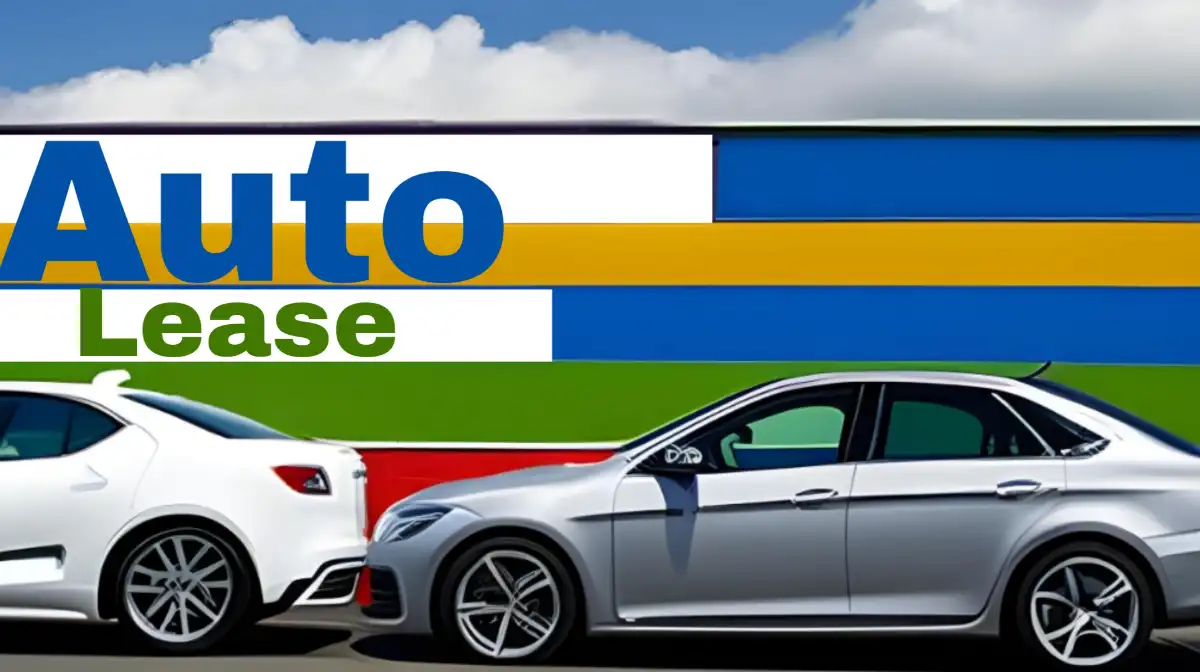Acquiring a vehicle, even during the best of periods, is a significant commitment. You tie up s substantial amount of cash in the down payment and then the monthly payments stretch out for 48, 60, or even 84 months. unfortunately, a car’s value depreciates the moment it leaves the dealership, meaning you could be in a position where you owe more than it is worth for several years. That’s where you need to consider why leasing a car is smart.
Leasing tends to be a more favored option in the debate between leasing or buying. Given the economic climate, you might want to consider leasing. It gives you the advantage of low or potentially no down payments, a shorter commitment period compared to a car loan, and, importantly, you shift the depreciation risk to the bank.
What is a Lease on Car?
A lease on a car is often compared to renting an apartment, and there are indeed similarities between the two. When you lease a car or an apartment, you enter into an agreement to use the property for a specified period, with the understanding that it will be returned in good condition.
However, leasing a car involves additional considerations that are not present in property leasing. Car lease agreements typically last two to three years and often offer the option to purchase the vehicle at the end of the term.
These agreements also impose restrictions on the number of miles the car can be driven each year, typically ranging from 12,000 to 15,000 miles. If you exceed the mileage limit, you may be charged an additional fee of around 25 cents per mile.
Why Leasing a Car is Smart in 2025

1. Leasing offers a shorter commitment
Isn’t this particularly appealing in uncertain times? With concerns about job security and financial stability, you could opt for leasing over purchasing a car.
Leasing agreements of 2-3 years provide a more flexible option. Additionally, the ability to transfer the lease to another person without severe financial penalties adds to its appeal.
2. Leasing requires minimal upfront costs
After experiencing financial strain during recent lockdowns, individuals often have limited funds available for a car down payment. However, lease contracts can be initiated with little or no money down. While this may result in higher monthly payments, some people still prefer this option, which explains why leasing a car is smart. Those seeking lower monthly payments should consider a lower-priced car within their budget.
3. Low-interest rates
Presently, lending rates are at their lowest in nearly 7 years. This reduction in interest rates, coupled with the availability of no-interest loans, significantly decreases the cost of monthly lease payments.
4. Automaker car lease incentives
Car manufacturers regularly offer incentives to make car purchases and leases more affordable. Currently, there are numerous low-cost leasing incentives available. However, these incentives may change as sales rebound, which is why leasing a car is smart.
For the best deals, visit the manufacturer’s website and search for special offers. The lease terms are clearly outlined, including the monthly payment, lease length in months, and the amount due at signing (similar to a down payment). Lenders can adjust these factors and apply cash incentives to arrive at a lower lease payment.
5. Leasing protects against sudden depreciation
The value of a leased car is based on predictions about its worth at the end of the lease. However, in today’s uncertain world, accurately predicting the car’s value after three years is challenging. If the car’s value unexpectedly drops, it becomes the lender’s concern, not yours. On the other hand, if the car’s value exceeds expectations, you have the option to purchase the car and potentially make a profit by selling it.
6. Reduced monthly payments
One of the primary benefits of leasing a car is the typically lower monthly payments compared to financing a purchase. When you finance a car, you are responsible for paying off the entire purchase price along with interest over the financing period. However, lease payments are calculated differently.
Instead of covering the full value of the vehicle, your monthly lease payments account for the depreciation of the car, as well as rent and taxes, throughout the lease term.
Since you are only financing the depreciation rather than the entire purchase price, your monthly payments are generally much lower. These savings can enable you to either upgrade to a newer and more desirable model within your budget or save money each month with a more affordable payment for a less expensive car.
7. Lower repair costs
Due to the short duration of lease terms, most repairs are covered by the manufacturer’s comprehensive warranty. In certain cases, the manufacturer may also cover maintenance costs. Nevertheless, make sure to carefully review your lease agreement and warranty or maintenance agreements. That’s because you need to understand which repairs and maintenance services are included to avoid unexpected expenses for vehicle servicing.
8. No reselling worries
With closed-end leases, returning the car at the end of the lease is all you need to do. There is no hassle of selling the vehicle, and the responsibility for the car’s value at the end of the lease lies with the leasing company, not you. However, you may still be liable for additional charges at the end of the lease term, such as excess wear and tear or mileage charges.
How Do You Lease a Car?
Having determined why leasing a car is smart, if you consider leasing a car, start by reviewing car dealership websites and then reach out to the dealerships either by phone or in person to inquire about lease specials and available options.
While consumers looking to buy a car usually focus on getting the lowest sale price, leasing a car involves seeking the best overall lease price, including taxes and fees, with the lowest possible monthly payment.
Since the lease term is typically shorter than a car loan term, shop around at different dealerships before making a decision, just as you would if you were purchasing a car. Below are extended tabulated considerations when leasing a car:
| Recommendations | |
|---|---|
| Consult pricing guides to gauge car prices accurately | Due to limited inventory caused by factory shutdowns, the prices of certain cars have increased. Start by checking car prices on reputable websites like Edmunds, TrueCar, and Kelley Blue Book. However, remember that these prices may not reflect real-world prices. |
| Compare lease quotes from multiple dealerships | Obtain lease quotes from at least three dealerships to ensure you’re getting the best deal. Provide the dealers with your desired drive-off fees, preferred loan length (three years is often recommended), and the number of miles you intend to drive. Based on this information, the dealer will provide you with a monthly payment. Remember that all aspects of the deal are negotiable. |
| Explore a wide range of options | Car factories experienced closures during the shutdown period, which may result in limited choices for a few months. Some manufacturer websites allow you to search for your desired model in specific colors across multiple dealerships. Casting a wide net in your search will help you find the right car for you. |
| Pay attention to mileage limits | Understand the number of miles included in the lease agreement. Typically, 12,000 miles per year is the standard. However, some leases now offer only 10,000 miles or fewer, with a lower monthly payment. With the rise of remote work becoming more common, fewer miles and a lower payment may suit many individuals better, according to Hall. |
Why Not to Lease a Car in 2025
Having known the reasons why leasing a car is smart, you also want to be aware of the cons and why not to lease a car.
1. Non-ownership of the vehicle
The most apparent drawback of leasing a car is that you do not own it at the end of the lease term. This means you won’t have a trade-in option if you decide to purchase a vehicle. Consumers who lease cars for extended periods may end up paying more than if they had initially bought the car.
2. Higher insurance premiums
Leasing a car typically leads to increased insurance premiums since full coverage is required. Full coverage ensures there are adequate funds available to cover repairs in case of an accident.
The entity financing the vehicle usually mandates this requirement to protect its investment. Full coverage includes collision coverage and comprehensive coverage, providing protection not only for accidental damage but also for theft or vandalism that may occur during the lease term.
3. Mileage restrictions
Lease agreements typically impose mileage limits, usually ranging from 12,000 to 15,000 miles per year. If you exceed the set limit, you will be subject to penalties for excess mileage, which can accumulate quickly.
4. More complex than buying
Leasing a car can be more complex compared to buying. Purchasing a car is relatively straightforward, whereas lease contracts can be intricate. To secure a good deal, it is crucial to carefully study the lease agreement and ask questions about any unclear terms or conditions.
5. Potential cost considerations
Breaking an auto lease can result in substantial fees. While long-term leases are an option, they may negate the financial benefits of leasing instead of buying. Leasing often costs more than what you would have paid through a long-term car loan.
Make sure to crunch the numbers and determine if a long-term lease works in your favor. You also want to be cautious of discounted lease offers that may come with additional fees not explicitly mentioned. these include sales tax or various drive-off fees. Be skeptical of deals that appear too good to be true.
Read also: How to Write Off a Car Lease with an LLC
![How to Be a Car Salesman with No Experience [Steps Included] How to Be a Car Salesman with No Experience [Steps Included]](https://sanedriver.org/wp-content/uploads/2021/02/used-car-salesman.jpg)

